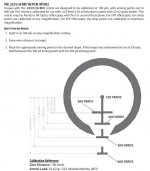It's entirely possible that I'm just an idiot so feel free to say so if that's the case.
This is a Bushnell AR Optic 1-6 LPVO.
The manual tells me this:
MOA all over there:

And yet the turrets are in MILS:
![20220315_155231[1]_cr.jpg 20220315_155231[1]_cr.jpg](https://www.snipershide.com/shooting/attachments/20220315_155231-1-_cr-jpg.8227666/)
It's bad enough that I just CANNOT seem to grasp how to use the mil system because of some inexplicable mental block, but then there seems to be conflicting information on top of it. I have read numerous articles, numerous forum conversations and watched some videos and it just gets worse. It's like I'm dealing with a foreign language.
Forgive my terseness please, but it's late and I've spent hours on this and am quite frustrated.
Any insight would make you my new hero.
Thanks
This is a Bushnell AR Optic 1-6 LPVO.
The manual tells me this:
MOA all over there:
And yet the turrets are in MILS:
It's bad enough that I just CANNOT seem to grasp how to use the mil system because of some inexplicable mental block, but then there seems to be conflicting information on top of it. I have read numerous articles, numerous forum conversations and watched some videos and it just gets worse. It's like I'm dealing with a foreign language.
Forgive my terseness please, but it's late and I've spent hours on this and am quite frustrated.
Any insight would make you my new hero.
Thanks


